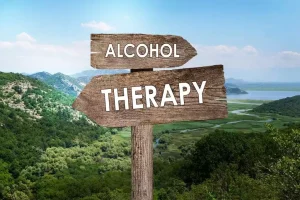
Recognizing the factors that contributed to the lapse, such as stressors or triggers, helps individuals to develop strategies and techniques to navigate similar challenges in the future. In the multifaceted journey of overcoming addiction and living a healthier life, individuals often encounter a psychological phenomenon known as the abstinence violation effect (AVE). It sheds light on the challenges individuals face when attempting to maintain abstinence and how a single lapse can trigger a surge of negative emotions, potentially leading to a full relapse or a return to unhealthy living (Collins & Witkiewitz, 2013; Larimer, Palmer, & Marlatt, 1999). Many people can relate to this feeling of guilt when they use a substance, like alcohol or marijuana, after promising themselves they wouldn’t. While relapse doesn’t mean you can’t achieve lasting sobriety, it can be a disheartening setback in your recovery.
Overcoming the Abstinence Violation Effect:
Our memory is like a playlist—only the favorite songs get replayed, leaving out the ones less liked. If I asked you about your past drinking experiences, you’d likely recall the bonding moments or numbing relaxation rather than the drunk argument and frequent blackouts. CP conceptualized the manuscript, conducted literature searches, synthesized the literature, and wrote the first draft of the manuscript.
Katie Witkiewitz
They found that their controlled drinking intervention produced significantly better outcomes compared to usual treatment, and that about a quarter of the individuals in this condition maintained controlled drinking for one year post treatment (Sobell & Sobell, 1973). The AVE was introduced into the substance abuse literature within the context of the “relapse process” (Marlatt and Gordon 1985, p. 37). Relapse has been variously defined, depending on theoretical orientation, treatment goals, cultural context, and target substance (Miller 1996; White 2007). It is, however, most commonly used to refer to a resumption of substance use behavior after a period of abstinence from substances (Miller 1996). The term relapse may be used to describe a prolonged return to substance use, whereas lapsemay be used to describe discrete, circumscribed… When abstinence is violated, individuals typically also have an emotional response consisting of guilt, shame, hopelessness, loss of control, and/or a sense of failure; they may use drugs or alcohol in an attempt to cope with the negative feelings that resulted from their abstinence violation.
Related terms:

Ark Behavioral Health Is an accredited drug and alcohol rehabilitation program, that believes addiction treatment should not just address “how to stay sober” but needs to transform the life of the addict and empower him or her to create a more meaningful and positive life. We are dedicated to transforming the despair of addiction into a purposeful life of confidence, self-respect and happiness. We want to give recovering addicts the tools to return to the outside world completely substance-free and successful. Lapses are, however, a major risk factor for relapse as well as overdose and other potential social, personal, and legal consequences of drug or alcohol abuse. This can include abstinence from substance abuse, overeating, gambling, smoking, or other behaviors a person has been working to avoid. Little do we know that once we take that one drink, the illusion of control shatters, and saying no to the next drink becomes even harder.
Expanding the continuum of substance use disorder treatment: Nonabstinence approaches
Next, we review other established SUD treatment models that are compatible with non-abstinence goals. We focus our review on two well-studied approaches that were initially conceptualized – and have been frequently discussed in the empirical literature – as client-centered alternatives to abstinence-based treatment. Of note, other SUD treatment approaches that could be adapted to target nonabstinence goals (e.g., contingency management, behavioral activation) are excluded from the current review due to lack of relevant empirical evidence. The past 20 years has seen growing acceptance of harm reduction, evidenced in U.S. public health policy as well as SUD treatment research. Thirty-two states now have legally authorized SSPs, a number which has doubled since 2014 (Fernández-Viña et al., 2020). Regarding SUD treatment, there has been a significant increase in availability of medication for opioid use disorder, especially buprenorphine, over the past two decades (opioid agonist therapies including buprenorphine are often placed under the “umbrella” of harm reduction treatments; Alderks, 2013).
2. Established treatment models compatible with nonabstinence goals
Those in addiction treatment or contemplating treatment can benefit from this aspect of relapse prevention. The abstinence violation effect (AVE) occurs when an individual, having made a personal commitment to abstain from using a substance or to cease engaging in some other unwanted behavior, has an initial lapse whereby the substance or behavior is engaged in at least once. The AVE abstinence violation effect occurs when the person attributes the cause of the initial lapse (the first violation of abstinence) to internal, stable, and global factors within (e.g., lack of willpower or the underlying addiction or disease).
- Marlatt, in particular, became well known for developing nonabstinence treatments, such as BASICS for college drinking (Marlatt et al., 1998) and Relapse Prevention (Marlatt & Gordon, 1985).
- If, however, individuals view lapses as temporary setbacks or errors in the process of learning a new skill, they can renew their efforts to remain abstinent.
- Marlatt (1985) describes an abstinence violation effect (AVE) that leads people to respond to any return to drug or alcohol use after a period of abstinence with despair and a sense of failure.
- Rather, when people with SUD are surveyed about reasons they are not in treatment, not being ready to stop using substances is consistently the top reason cited, even among individuals who perceive a need for treatment (SAMHSA, 2018, 2019a).
Is a Relapse Dangerous?
- We focus our review on two well-studied approaches that were initially conceptualized – and have been frequently discussed in the empirical literature – as client-centered alternatives to abstinence-based treatment.
- It can impact someone who is trying to be abstinent from alcohol and drug use in addition to someone trying to make positive changes to their diet, exercise, and other aspects of their lives.
- Treatment in this component involves describing the AVE, and working with the client to learn alternative coping skills for when a lapse occurs, such that a relapse is prevented.
Kristen P. Lindgren is an assistant professor and licensed clinical psychologist in the University of Washington’s Department of Psychiatry and Behavioral Sciences. Her research interests include addictions, posttraumatic stress disorder, sexuality, and relationships. Her work focuses on implicit (i.e. nonconscious or automatic) cognitive processes that contribute to the development and maintenance of maladaptive behavior and psychopathology.
- AVE describes the negative, indulgent, or self-destructive feelings and behavior people often experience after lapsing during a period of abstinence.
- In 1990, Marlatt was introduced to the philosophy of harm reduction during a trip to the Netherlands (Marlatt, 1998).
- Her work focuses on implicit (i.e. nonconscious or automatic) cognitive processes that contribute to the development and maintenance of maladaptive behavior and psychopathology.
- Indeed, about 95% of people with SUD say they do not need SUD treatment (SAMHSA, 2019a).
- Specific intervention strategies include helping the person identify and cope with high-risk situations, eliminating myths regarding a drug’s effects, managing lapses, and addressing misperceptions about the relapse process.
- Marlatt coined the term abstinence violation effect to refer to situations in which addicts respond to an initial indulgence by consuming even more of the forbidden substance 11.
She hopes to continue investigating implicit and explicit measures of substance abuse in the future. People in addiction recovery often experience drug cravings when they go through stress. When you are feeling overwhelmed, your brain may unconsciously crave drugs as a way to help you feel better.


Relapse Prevention (RP) is another well-studied model used in both AUD and DUD treatment (Marlatt & Gordon, 1985). In its original form, RP aims to reduce risk of relapse by teaching participants cognitive and behavioral skills for coping in high-risk situations (Marlatt & Gordon, 1985). More recent versions of RP have included mindfulness-based techniques (Bowen, Chawla, & Marlatt, 2010; Witkiewitz et al., 2014). The RP model has been studied among individuals with both AUD and DUD (especially Cocaine Use Disorder, e.g., Carroll, Rounsaville, & Gawin, 1991); with the largest effect sizes identified in the treatment of AUD (Irvin, Bowers, Dunn, & Wang, 1999). As a newer iteration of RP, Mindfulness-Based Relapse Prevention (MBRP) has a less extensive research base, though it has been tested in samples with a range of SUDs (e.g., Bowen et al., 2009; Bowen et https://ecosoberhouse.com/article/alcohol-abuse-and-narcissism-how-are-they-linked/ al., 2014; Witkiewitz et al., 2014).

This suggests that individuals with nonabstinence goals are retained as well as, if not better than, those working toward abstinence, though additional research is needed to confirm these results and examine the effect of goal-matching on retention. The harm reduction movement, and the wider shift toward addressing public health impacts of drug use, had both specific and diffuse effects on SUD treatment research. In 1990, Marlatt was introduced to the philosophy of harm reduction during a trip to the Netherlands (Marlatt, 1998). He adopted the language and framework of harm reduction in his own research, and in 1998 published a seminal book on harm reduction strategies for a range of substances and behaviors (Marlatt, 1998).

